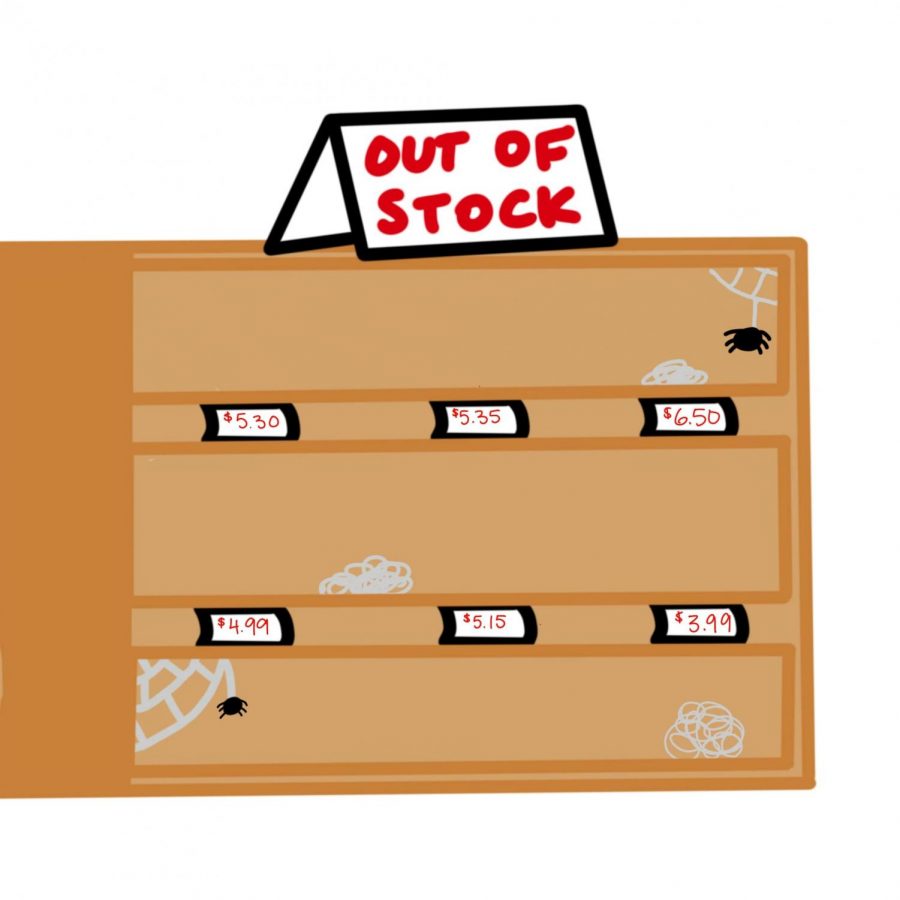Stocking stuffers face stocking issues
As everyone is roasting chestnuts on an open fire and rocking around the Christmas tree, supply line backups could put a damper on the most wonderful time of the year. Following the pandemic, shipping and distribution companies have entered a crisis while trying to keep up with the extreme growth in demand. Not only has this led to food shortages and trading standstills, this will also greatly affect Christmas in the U.S.
After the COVID-19 pandemic, the demand for manufactured goods has skyrocketed. With children returning in person to school and group activities resuming, this is no surprise. But as Christmas and other holiday shopping begins, lack of supply is starting to show. This is greatly affecting many shipping and manufacturing businesses who must now meet this demand with fewer workers, fewer available ports, and must navigate shipping and travel bans. As workers have transitioned from the office to at home work, many shipping and distribution companies struggle to find enough workers to do the physical labor of packaging, shipping, and unloading. Ports around the world and in the U.S. were closed during the pandemic, and travel and shipping bans were put in place. Many ports are slowly reopening and bans have not yet been removed in many areas of the world. This not only limits the amount of toys and gifts available for purchase this Christmas season, but also raises the prices on many items.
The supply chain struggle is being highlighted in the United States as citizens rush to stores to buy holiday presents and food for big family dinners. Many major stores such as Walmart and Target are taking the situation into their own hands to ensure that their businesses do not struggle and their customers will not leave empty handed this holiday season. Walmart has released newsletters and articles detailing how they will keep their shelves stocked. Some details from these newsletters include using less congested ports for shipping, hiring over 3,000 drivers for the season, using less conventional methods to avoid rail delays, andd creating 20,000 permanent supply chain positions. They are also hiring 150,000 employees and expanding their delivery systems. Target similarly organized a mass hire in its supply chain, increased 24-hour-a-day operations and diverted their containers out of congested ports. Even with the reassurance of large corporations, the supply chain crisis could affect families all across America to varying degrees.
“Of course the most important thing for my family is to look at this as a teeny tiny opportunity to detach from our material desires,” said theology teacher Mrs. Carrie Soukup. “None of the things that I will be giving up this Christmas amount to much of anything at all. We have started eating smaller portions of meat because it is expensive but I don’t think my family has noticed.”
Not only does the supply chain backup lead to a shortage of products, it also causes the price of the available products to increase greatly. Those who could not or struggled to normally purchase toys and gifts for the holiday will feel the greatest impact of the supply chain crisis. Toy drives and holiday charities for kids and families have done their best to increase the awareness of this issue and encourage others to donate and participate in giving others the gift of a happier holiday season.
“We have the opportunity this year to donate to the Walter Payton Toy Drive,” said sophomore Clare McDonough. “If those who can donate choose to, we could collect numerous toys for those who cannot afford them as an entire school.”
Many policies have been proposed to solve the issues with the American supply chain, including increasing pay of work at ports and supply hubs as well as diversifying manufacturing companies. All these methods, though, have their own flaws. But normal citizens can do their part and share what they can to make this the most wonderful time of the year.
Your donation will support the student journalists of Saint Viator High School. Your contribution will allow us to purchase equipment and cover our annual website hosting costs.








